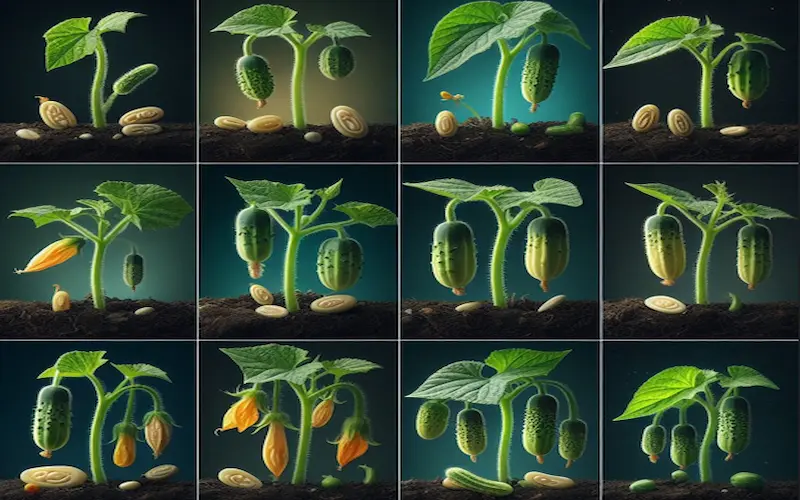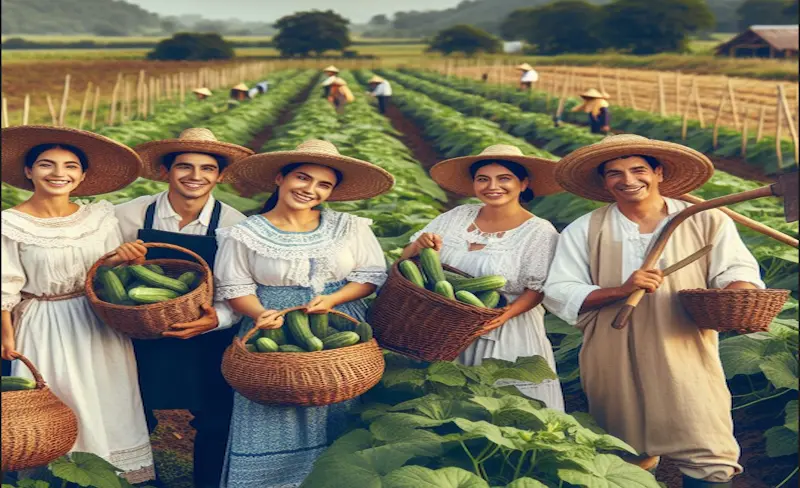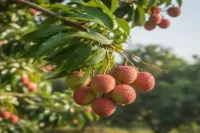Unlocking the Growth Secrets: Exploring the Stages of a Cucumber Plant
Published: 11 Jul 2024
As a passionate gardener and writer, I’ve always been fascinated by plants’ journey from seed to harvest. Today, I want to share the intriguing stages of a cucumber plant, a versatile and popular vegetable in gardens worldwide. Understanding these stages enhances our appreciation for the natural world and equips us with the knowledge to nurture our plants more effectively.
Cucumbers have been a staple in my garden for years with their crisp texture and refreshing taste. They belong to the Cucurbitaceae family, which includes pumpkins, squashes, and melons. These vining plants thrive in warm, fertile soil and require ample sunlight and water to reach their full potential. My journey with cucumbers began with curiosity and grew into a deep respect for their growth process, which is both complex and fascinating.

One of the reasons cucumbers have become a favourite in my garden is their adaptability. They can be grown in various settings, from extensive gardens to small containers. With the right conditions, cucumbers can yield an abundant harvest. However, it’s crucial to comprehend the intricate stages of a cucumber plant’s life cycle to achieve this.
The Life Cycle of a Cucumber Plant
The life cycle of a cucumber plant is a beautiful symphony of stages, each contributing to the development of the plant. From the moment the seed is sown to the day of harvest, each stage is critical and deserves attention. As I’ve observed in my garden, the life cycle can be affected by environmental factors, which can either accelerate or hinder growth. It’s a delicate balance that requires both patience and vigilance.
Understanding the life cycle has been paramount in cultivating healthy cucumber plants. It has allowed me to anticipate their needs and respond accordingly. The stages of a cucumber plant, from germination to harvesting, form a roadmap that guides gardeners through the growing season.

Cucumber Growth Chart

Stage 1: Germination
Germination is the miraculous moment when life begins for a cucumber plant. It starts with selecting high-quality, disease-free seeds and planting them in warm, moist soil. I ensure the soil temperature is between 70 and 95 degrees Fahrenheit, as cucumbers are warmth-loving plants. The seed coat breaks open within 3 to 10 days, and a tiny shoot emerges, embarking on its growth journey.
I keep the soil moist but not waterlogged during germination to prevent rotting. This stage is critical because the conditions set the tone for the development of the plant. I always care for the seeds and emerging seedlings, as they are delicate and vulnerable during this initial phase.

Stage 2: Seedling Growth
The young cucumber plant shows its first true leaves in the seedling stage. The true leaves will begin to develop after the cotyledons (the first set of leaves) appear. These leaves are distinctively different in shape and size, indicating that the plant is ready to harness energy from the sun through photosynthesis.
This stage is advantageous, as I can watch the rapid growth and development of the plant. The seedlings require adequate light, water, and nutrients to build strength for the next phase. I protect them from harsh elements, such as strong winds or intense sunlight, that could hinder their progress.

Stage 3: Vegetative Growth
As the cucumber plant enters the vegetative growth stage, it develops a robust root system and more foliage. This is when the plant focuses on growing more extensively and robustly rather than producing flowers or fruits. The leaves become more comprehensive, and the stems grow thicker, supporting the upcoming reproductive stages.
During this phase, I pay close attention to the nutritional needs of the cucumber plants. They require a balanced fertilizer that promotes leaf and stem growth. I also ensure they have enough space to spread out, as cucumbers are vining plants that can become quite large. Proper spacing helps prevent disease and allows for better airflow around the plants.

Stage 4: Flowering and Pollination
Flowering is an essential stage in the life cycle of a cucumber plant, as it signifies the beginning of fruit production. Cucumber plants produce both male and female flowers, distinguished by a small ovary at the base resembling a miniature cucumber. Pollination is essential for fruit development, and in my garden, I rely on bees and other pollinators to carry pollen from male to female flowers.
Without natural pollinators, I sometimes take on the role of using a small brush to transfer pollen. This stage is exciting and nerve-wracking, as successful pollination will determine the quality and quantity of the cucumber harvest. Ensuring the plants have enough water and are protected from extreme temperatures is vital during this phase.

Stage 5: Fruit Development
Once pollination occurs, the fruit development stage begins. This is when the flowers wither, and the ovary grows into a cucumber. I monitor the growth closely, as cucumbers can mature quickly, especially in warm weather. Regular watering and fertilization are crucial to producing plump, juicy cucumbers.
This stage always reminds me of the wonders of nature as I watch the tiny fruits grow more prominent each day. It’s a testament to the care and attention provided throughout the previous stages. I also watch for signs of pests or diseases, which can quickly spoil the fruits of my labour.

Stage 6: Harvesting and Post-Harvest Care
Harvesting is the stage I eagerly anticipate, as it’s the culmination of all the hard work. Cucumbers are typically ready to harvest when they reach the desired size and the skin is bright green and firm. I use a sharp knife or scissors to cut the cucumbers from the vine, careful not to damage the plant or the remaining fruits.
After harvesting, I practice post-harvest care by storing the cucumbers at a cool temperature to preserve their freshness. It’s also essential to keep the plants healthy to continue producing. Regularly removing overripe or damaged cucumbers and maintaining the plants can extend the harvest period.

Common Problems and Solutions During Each Stage
Various problems can arise Throughout a cucumber plant’s stages, such as pests, diseases, and environmental stresses. For each issue, there’s a solution that can help salvage the situation. I’ve battled aphids, powdery mildew, and inconsistent watering, learning valuable lessons.
Pest control often involves introducing beneficial insects or using organic pesticides. For diseases, prevention is critical, which means selecting resistant varieties and practicing crop rotation. To address environmental stresses, mulching and providing shade can protect the plants from extreme conditions.

Question and Answer Related Topic
Persian cucumber! Also known as Salon or Turkestan cucumber. It’s a popular variety of cucumbers originating from the Middle East and Central Asia. Characterized by its slender, dark green color, and slightly sweet flavor, Persian cucumbers are used in fresh salads, as a snack, or pickled in vinegar. They’re also prized for their high water content, making them a refreshing and hydrating addition to many dishes. Perfect for adding a burst of crisp flavor to your meals!
Conclusion: The Importance of Understanding the Stages of a Cucumber Plant
Understanding the stages of a cucumber plant is crucial for any gardener aiming to achieve a bountiful harvest. Each stage presents challenges and rewards, and navigating them successfully requires knowledge, patience, and adaptability. By sharing my experiences, I aim to inspire fellow gardeners to embark on their cucumber-growing journey with confidence and excitement.
Witnessing the transformation from a tiny seed to a delicious cucumber is a journey worth taking. It’s a process that has taught me not only about gardening but also about the resilience and beauty of nature. So, take the time to learn and unlock the secrets to a successful and satisfying harvest.

- Be Respectful
- Stay Relevant
- Stay Positive
- True Feedback
- Encourage Discussion
- Avoid Spamming
- No Fake News
- Don't Copy-Paste
- No Personal Attacks



- Be Respectful
- Stay Relevant
- Stay Positive
- True Feedback
- Encourage Discussion
- Avoid Spamming
- No Fake News
- Don't Copy-Paste
- No Personal Attacks



